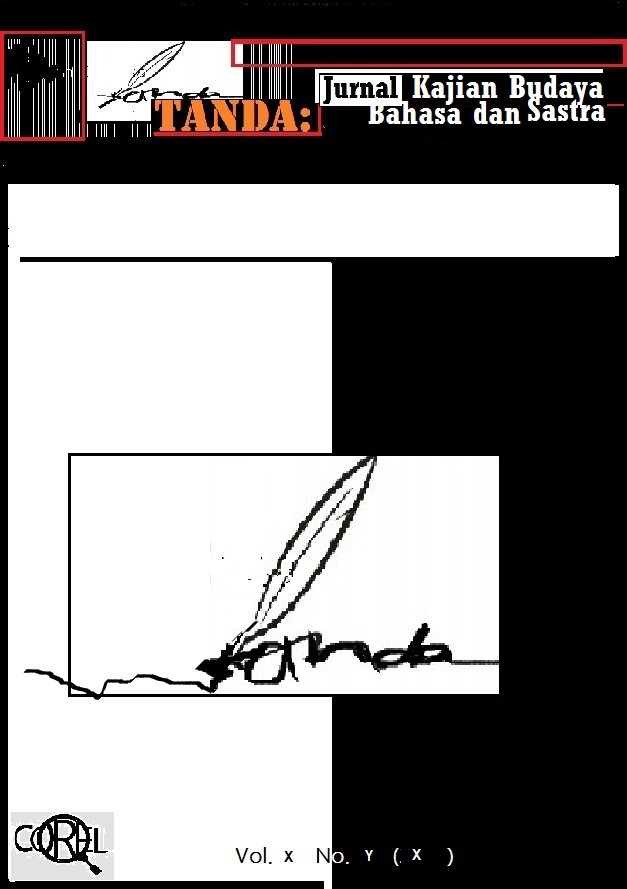BUDAYA DAN SENI KREATIF TARI KECAK DI BALI
DOI:
https://doi.org/10.69957/tanda.v3i03.1869Keywords:
Tari Kecak, Budaya, TradisionalAbstract
Kecak Dance is a traditional art form originating from Bali, Indonesia, which combines dance and theater aspects. The art was introduced in the 1930s by Wayan Limbak and German artist Walter Spies, who were inspired by the Sanghyang ceremony which has spiritual significance in Balinese society. The Kecak Dance depicts the epic story of Ramayana, especially about the fight between Rama and Ravana to save Goddess Sinta, which symbolizes the eternal war between good and evil.
References
Abdullah Irwan, Konstruksi dan Reproduksi Kebudayaan. Yogyakarta : Pustaka Pelajar Offset, 2010.
Bandem, I. M., & deBoer, F. E. Balinese Dance in Transition: Kaja and Kelod. Oxford University Press, 1995.
Bourdieu, Pierre, Arena Produksi Kultural Sebuah Kajian Sosiologi Budaya. Bantul : Kreasi Wacana Offset, 2010.
Geertz, C. The Interpretation of Cultures. Basic Books, 1973.
Giddens Anthony, Kapitalisme Dan Teori Sosial Modern, Suatu Analisis Karya Marx, Durkheim dan Max Weber. Jakarta : Universitas Indonesia Press, 2009.
Hanna, J. L. The Performer-Audience Connection: Emotion to Metaphor in Dance and Society. University of Texas Press, 2004.
Hobart, M. Rethinking Balinese Dance. Yale Southeast Asia Studies, 2001.
Nordholt, Henk Schulte, Bali Benteng Terbuka 1995-2005, Otonomi Daerah, Demokrasi Elektoral dan Identitas Defensif. Denpasar : Pustaka Larasan, 2010.
Picard, M. Bali: Cultural Tourism and Touristic Culture. Archipelago Press, 1996.
Piliang Yasraf Amir, Dunia Yang Dilipat Tamsya Melampaui Batas-Batas Kebudayaan. Bandung : Matahari, 2011.
Putra, I. B. "Adapting Tradition: The Role of Balinese Performing Arts in Modern Tourism." Journal of Southeast Asian Studies, 47(2), 321-345, 2016.
Tillar, H.A.R, Mengindonesia Etnisitas dan Identitas Bangsa Indonesia, Tinjauan Dari Perspektif Pendidikan. Jakarta : Rineka Cipta, 2007.
Vickers, A. Bali: A Paradise Created. Penguin Books, 1989.
Wolff, Janet, The Social Production Of Art. New York : Martinus’ Press, 1989.
Downloads
Published
How to Cite
Issue
Section
License
Copyright (c) 2023 Rahelia Adinda Putri Dewi, Lintang Aulia Septya Kusuma Wardani

This work is licensed under a Creative Commons Attribution-ShareAlike 4.0 International License.
Authors publishing in TANDA: Jurnal Kajian Budaya, Bahasa dan Sastra e-ISSN 2797-0477 will be asked to sign a Copyright Determination Form. In signing the form, it is assumed that the author has obtained permission to use copyrighted or previously published material. All authors must read and agree to the terms outlined in the form, and must sign the form or agree that the corresponding author can sign on their behalf. The article cannot be published until the signed form has been received. It is a condition of publication that authors grant copyright or license the publication rights in their article, including the abstract, to jurnaltanda@gmail.com. This allows us to ensure full copyright protection and to disseminate the article, and of course the Journal to the widest possible readership in both print and electronic formats.













